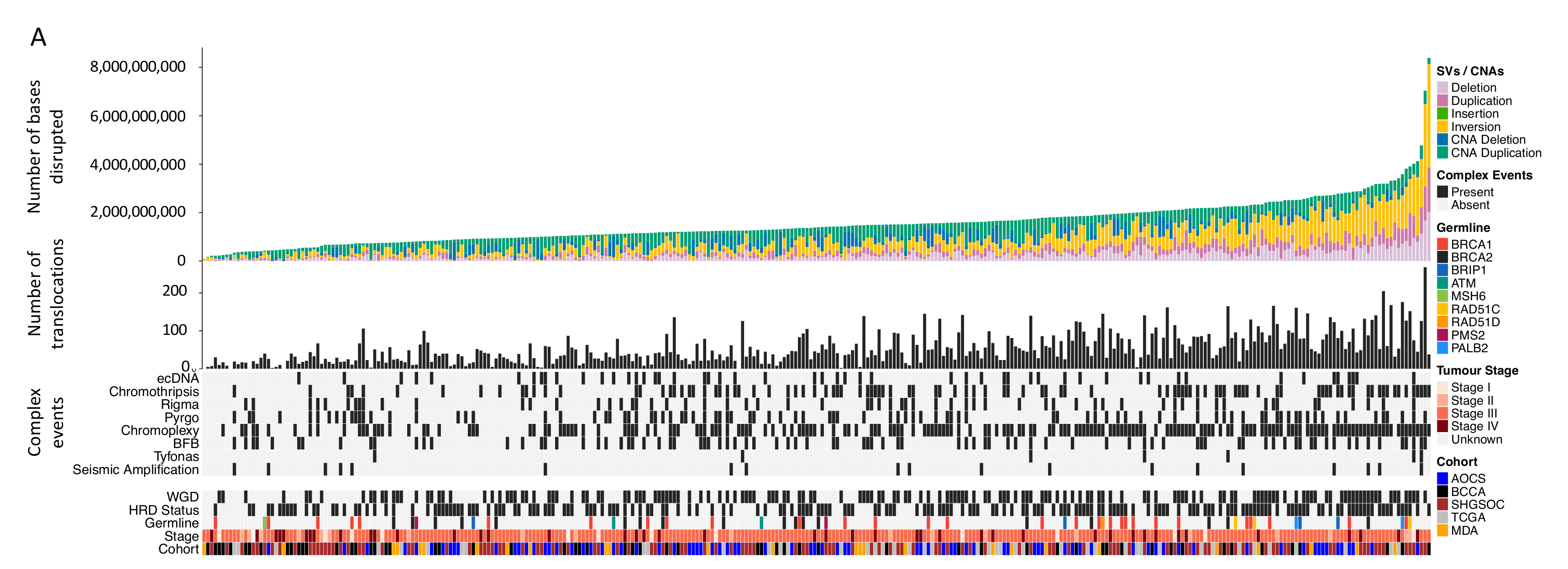Published: Jan 15, 2024 by Ailith

We have posted a new preprint on bioRxiv ‘Divergent trajectories to structural diversity impact patient survival in high grade serous ovarian cancer’.
This work highlights high grade serous ovarian carcinoma as an exemplar tumour type for studying chromosomal instability and is the result of a combined effort across the Scottish High Grade Serous Ovarian Consortium to comprehensively characterise the mutational landscape driving high grade serous ovarian cancer.
I have highlighted our main findings in a tweetorial.
Well done to Kitty, Jo and Stuart for all the work they contributed to this study!
Abstract
Deciphering the structural variation across tumour genomes is crucial to determine the events driving tumour progression and better understand tumour adaptation and evolution. High grade serous ovarian cancer (HGSOC) is an exemplar tumour type showing extreme, but poorly characterised structural diversity. We comprehensively describe the mutational landscape driving HGSOC, exploiting a large (N=324), deeply whole genome sequenced dataset. We reveal two divergent evolutionary trajectories, affecting patient survival and involving differing genomic environments. One involves homologous recombination repair deficiency (HRD) while the other is dominated by whole genome duplication (WGD) with frequent chromothripsis, breakage-fusion-bridges and extra-chromosomal DNA. These trajectories contribute to structural variation hotspots, containing novel candidate driver genes with significantly altered expression. While structural variation predominantly drives tumorigenesis, we also find high mtDNA mutation loads associated with shorter patient survival, and acting in combination with alterations in the nuclear genome to impact prognosis and suggesting new strategies for patient stratification.